In the ever-evolving landscape of electric SUVs, the competition continues to heat up with remarkable entries from established automakers. One of the most intriguing rivalries is between the BMW iX2 and the Tesla Model Y. Both vehicles embody cutting-edge technology and sustainability, but there's a depth of difference in performance, design, and innovation that potential buyers should consider. Let’s dive deeper into the details of these two electric SUVs.
BMW iX2 vs Tesla Model Y – Which model is better for everyday use?
Everyday use, family trips or long-distance drives – here’s where the differences show.
Discover whether BMW iX2 or Tesla Model Y fits your lifestyle better.
Design and Dimensions
The BMW iX2 boasts a sleek and modern design typical of the brand's aesthetic, presenting a bold stance with a length of 4554 mm, a width of 1845 mm, and a height of 1560 mm. This compact SUV is built to accommodate five passengers comfortably, offering a trunk capacity of 525 liters.
On the other hand, the Tesla Model Y is a larger vehicle with dimensions of 4751 mm in length, 1921 mm in width, and 1624 mm in height. It provides flexibility with seating options for five or seven passengers, depending on the configuration, and boasts a substantial trunk capacity ranging from 363 liters to 854 liters.
Powertrain and Performance
The BMW iX2 comes equipped with two engine configurations, delivering 204 HP in its entry-level Front-Wheel Drive model and 313 HP in the All-Wheel Drive variant. The vehicle accelerates from 0 to 100 km/h in 8.6 seconds for the lower model and an impressive 5.6 seconds for the higher output version. It features a battery capacity of 64.8 kWh that enables a range of 459 km, with energy consumption ratings of 15.9 to 16.9 kWh/100 km.
In comparison, the Tesla Model Y shines with multiple configurations offering up to 534 HP. Its top-tier performance model can rocket from 0 to 100 km/h in just 3.7 seconds. Depending on the variant, Tesla provides battery capacities ranging from 62 kWh to 79 kWh, allowing a remarkable electric range of up to 600 km, with energy consumption between 14.9 and 17.3 kWh/100 km.
Driving Experience
When it comes to driving dynamics, the BMW iX2 aims to encapsulate the thrill of driving that the brand is known for. Its all-wheel-drive system ensures better traction and stability on various terrains. The torque output ranges from 250 Nm to 494 Nm, offering a responsive driving experience.
On the flip side, the Tesla Model Y, with its immediate torque delivery up to 660 Nm, provides a thrilling acceleration that leaves many electric rivals in the dust. The Model Y’s rear-wheel and all-wheel drive options present drivers with the choice of a sportier or more efficient driving experience.
Technology and Innovations
Both models are equipped with an array of advanced technologies catering to the modern driver. The BMW iX2 features the latest iDrive 8 infotainment system, further enhancing the user experience with its intuitive interface and excellent connectivity options. Safety remains a priority for BMW, offering an extensive suite of driver-assistance systems.
The Tesla Model Y is celebrated for its minimalist interior dominated by a large touchscreen that controls almost all of the vehicle’s functions. Its Autopilot capabilities, along with regular over-the-air updates, mean that the Model Y continuously improves post-purchase, setting a new standard for automotive technology.
Conclusion: Which SUV Should You Choose?
Your choice between the BMW iX2 and Tesla Model Y ultimately depends on your priorities. If you lean towards a dynamic driving experience coupled with luxurious features and a compact size, the BMW iX2 is an excellent choice. However, if you prefer cutting-edge technology, superior performance, and impressive range, the Tesla Model Y could be the right fit.
In the world of electric SUVs, both the BMW iX2 and Tesla Model Y showcase the potential of electric mobility while catering to different tastes and needs. As the market evolves, these vehicles will undoubtedly set the tone for future developments in the automotive industry.
Here’s where it gets real: The technical differences in detail
Costs and Efficiency:
Price and efficiency are often the first things buyers look at. Here it becomes clear which model has the long-term edge – whether at the pump, the plug, or in purchase price.
Tesla Model Y has a to a small extent advantage in terms of price – it starts at 38600 £, while the BMW iX2 costs 43100 £. That’s a price difference of around 4552 £.
In terms of energy consumption, the advantage goes to the Tesla Model Y: with 13.90 kWh per 100 km, it’s slightly more efficient than the BMW iX2 with 15.30 kWh. That’s a difference of about 1.40 kWh.
As for range, the Tesla Model Y performs noticeable better – achieving up to 622 km, about 144 km more than the BMW iX2.
Engine and Performance:
Under the bonnet, it becomes clear which model is tuned for sportiness and which one takes the lead when you hit the accelerator.
When it comes to engine power, the Tesla Model Y has a decisively edge – offering 627 HP compared to 313 HP. That’s roughly 314 HP more horsepower.
In acceleration from 0 to 100 km/h, the Tesla Model Y is significantly quicker – completing the sprint in 3.50 s, while the BMW iX2 takes 5.60 s. That’s about 2.10 s faster.
In terms of top speed, the Tesla Model Y performs distinct better – reaching 250 km/h, while the BMW iX2 tops out at 180 km/h. The difference is around 70 km/h.
There’s also a difference in torque: BMW iX2 pulls barely noticeable stronger with 494 Nm compared to 493 Nm. That’s about 1 Nm difference.
Space and Everyday Use:
Beyond pure performance, interior space and usability matter most in daily life. This is where you see which car is more practical and versatile.
Both vehicles offer seating for 5 people.
In curb weight, BMW iX2 is slight lighter – 1960 kg compared to 1976 kg. The difference is around 16 kg.
In terms of boot space, the Tesla Model Y offers noticeable more room – 822 L compared to 525 L. That’s a difference of about 297 L.
In maximum load capacity, the Tesla Model Y performs evident better – up to 2022 L, which is about 622 L more than the BMW iX2.
When it comes to payload, BMW iX2 minimal takes the win – 510 kg compared to 472 kg. That’s a difference of about 38 kg.
Who comes out on top?
Overall, the Tesla Model Y shows itself to be leaves the rival little chance and secures the title of DriveDuel Champion.
It convinces with the more balanced overall package and proves to be the more versatile choice for everyday use.
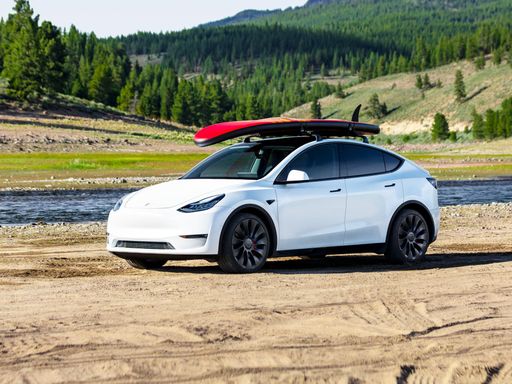
Tesla Model Y
BMW iX2
The BMW iX2 stands out with its distinctive design and forward-thinking technology, making it a captivating choice for those interested in luxury electric vehicles. Its spacious interior and cutting-edge features offer both comfort and innovation, providing an exceptional driving experience. With a commitment to sustainability, this model is not just a statement of style but also an embodiment of the future of eco-conscious driving.
details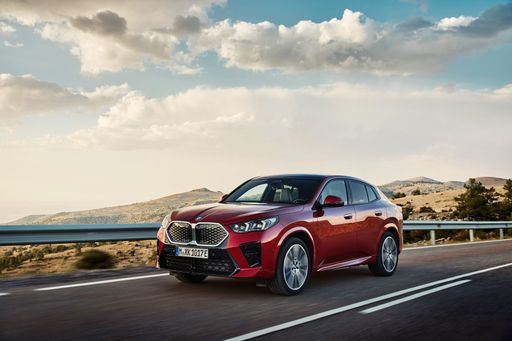 @ press.bmwgroup.com
@ press.bmwgroup.com
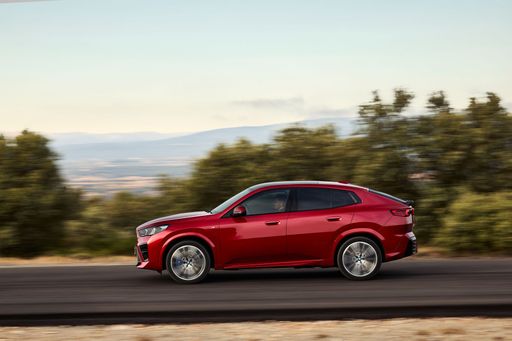 @ press.bmwgroup.com
@ press.bmwgroup.com
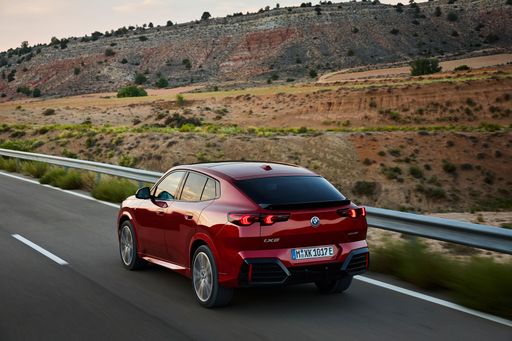 @ press.bmwgroup.com
@ press.bmwgroup.com
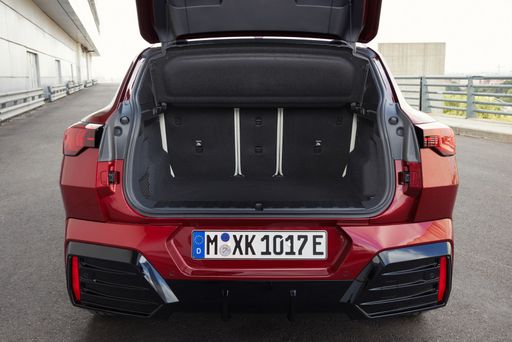 @ press.bmwgroup.com
@ press.bmwgroup.com
Tesla Model Y
The Tesla Model Y stands out in the electric vehicle market with its sleek design and impressive range. Its interior is minimalist yet stylish, offering a spacious cabin that enhances the driving experience. The Model Y also features advanced technology, including an intuitive infotainment system, making it a leader in innovative motoring.
details @ tesla.com
@ tesla.com
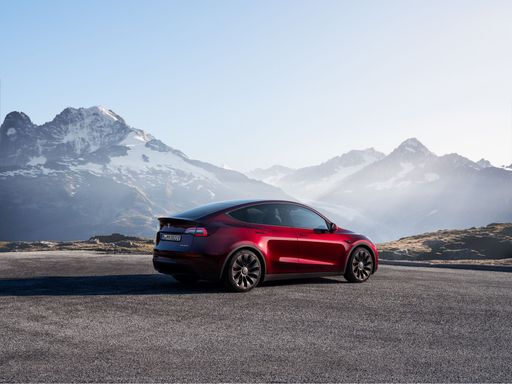 @ tesla.com
@ tesla.com
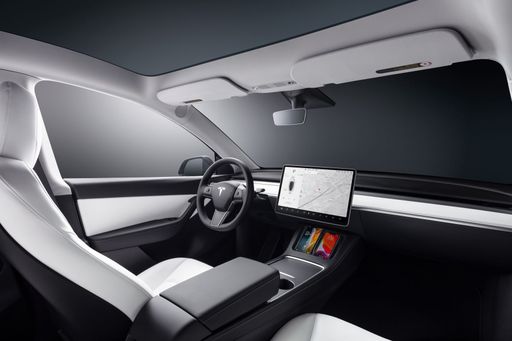 @ tesla.com
@ tesla.com
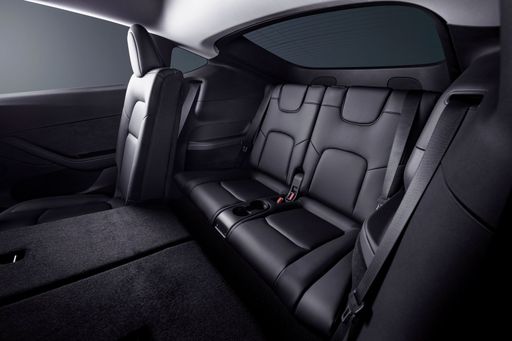 @ tesla.com
@ tesla.com

|

|
|
|
|
Costs and Consumption |
|
|---|---|
|
Price
43100 - 54800 £
|
Price
38600 - 53100 £
|
|
Consumption L/100km
-
|
Consumption L/100km
-
|
|
Consumption kWh/100km
15.3 - 16.3 kWh
|
Consumption kWh/100km
13.9 - 16.2 kWh
|
|
Electric Range
449 - 478 km
|
Electric Range
500 - 622 km
|
|
Battery Capacity
64.80 kWh
|
Battery Capacity
64.5 - 85 kWh
|
|
co2
0 g/km
|
co2
0 g/km
|
|
Fuel tank capacity
-
|
Fuel tank capacity
-
|
Dimensions and Body |
|
|---|---|
|
Body Type
SUV
|
Body Type
SUV
|
|
Seats
5
|
Seats
5
|
|
Doors
5
|
Doors
5
|
|
Curb weight
1960 - 2095 kg
|
Curb weight
1976 - 2108 kg
|
|
Trunk capacity
525 L
|
Trunk capacity
822 L
|
|
Length
4554 mm
|
Length
4790 - 4796 mm
|
|
Width
1845 mm
|
Width
1921 mm
|
|
Height
1560 mm
|
Height
1611 - 1624 mm
|
|
Max trunk capacity
1400 L
|
Max trunk capacity
2022 L
|
|
Payload
500 - 510 kg
|
Payload
418 - 472 kg
|
Engine and Performance |
|
|---|---|
|
Engine Type
Electric
|
Engine Type
Electric
|
|
Transmission
Automatic
|
Transmission
Automatic
|
|
Transmission Detail
Reduction Gearbox
|
Transmission Detail
Reduction Gearbox
|
|
Drive Type
Front-Wheel Drive, All-Wheel Drive
|
Drive Type
Rear-Wheel Drive, All-Wheel Drive
|
|
Power HP
204 - 313 HP
|
Power HP
299 - 627 HP
|
|
Acceleration 0-100km/h
5.6 - 8.6 s
|
Acceleration 0-100km/h
3.5 - 5.9 s
|
|
Max Speed
170 - 180 km/h
|
Max Speed
201 - 250 km/h
|
|
Torque
250 - 494 Nm
|
Torque
420 - 493 Nm
|
|
Number of Cylinders
-
|
Number of Cylinders
-
|
|
Power kW
150 - 230 kW
|
Power kW
220 - 461 kW
|
|
Engine capacity
-
|
Engine capacity
-
|
General |
|
|---|---|
|
Model Year
2024
|
Model Year
2025
|
|
CO2 Efficiency Class
A
|
CO2 Efficiency Class
A
|
|
Brand
BMW
|
Brand
Tesla
|
What drivetrain options does the BMW iX2 have?
The BMW iX2 is available as Front-Wheel Drive or All-Wheel Drive.
The prices and data displayed are estimates based on German list prices and may vary by country. This information is not legally binding.
